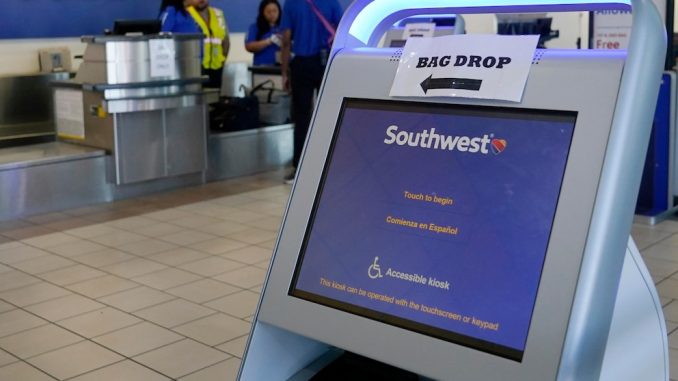
DALLAS — Southwest Airlines’ third-quarter profit fell 30% to $193 million despite record revenue as leisure travel boomed over the summer, and the airline is losing pricing power at the same time that labor costs are rising.
Southwest said Thursday that it will throttle back growth plans next year because of changes in travel, including a disappointingly slow recovery in business travel.
“The whole sector is under pressure obviously. Costs are rising, and a lot of that is labor cost,” CEO Robert Jordan said on CNBC.
The results, and particularly Southwest’s plans to grow more slowly, are likely to add to concern that demand for domestic travel — the heart of Southwest’s business — is weakening.
Shares of Southwest Airlines Co. slid more than 3% after the market opened, but had cut the loss to less than 1% in late-morning trading.
Jordan declined to say that Southwest has added too many flights, but he conceded that lucrative business travel has not recovered as quickly as the airline expected. He added that leisure flyers are returning to pre-pandemic patterns, so demand for tickets drops off more sharply in shoulder seasons such as fall and late winter.
Peak periods, however, remain strong. Jordan said bookings for upcoming holidays — Thanksgiving and Christmas — are running ahead of last year’s pace.
Still, Southwest forecast that pricing power will weaken sharply in the fourth quarter. Revenue for each seat flown one mile, a closely watched measure of prices, will decline 9% to 11% in the fourth quarter compared with the same period last year. That is a much sharper drop than those anticipated by Southwest’s larger rivals.
That underperformance is likely the reason that Southwest will scale back its aggressive growth plans early next year.
The airline expects fourth-quarter passenger-carrying capacity to increase a stunning 21% compared with the same period last year. Southwest said it will cut that growth in half in the first quarter of next year — to between 10% and 12%, four points less than previously planned.
By the second half of next year, Jordan said, Southwest will fly fewer seats than it will in the same period this year.
Raymond James airline analyst Savanthi Syth said the capacity cuts are deeper than investors expected and, along with similar slow-growth plans by other U.S. airlines, “likely bodes well for future pricing trends.”
Southwest’s third-quarter profit slipped from $277 million a year ago and, excluding special items, worked out to 38 cents per share. That matched Wall Street expectations, according to a FactSet survey of analysts.
Revenue rose $305 million, or 5%, to $6.52 billion, just short of projections for $6.56 billion. Bookings close to departure were lower than expected in August and September.
Labor costs rose by $406 million, an increase of more than 17%. Southwest has agreed to new contracts with several labor groups including flight attendants this week, but it is the only one of the nation’s four biggest airlines that has not yet settled with pilots, the most expensive group.
Pilots at American, Delta and United have received pay raises totaling around 40% over four years, and Southwest will likely be forced to accept similar terms.
The airline saved $186 million in the third quarter because fuel was cheaper than a year earlier. Fuel prices have been rising recently, however, and Southwest expects to pay more per gallon in the fourth quarter than it did in the third.
Dallas-based Southwest depends almost entirely on travel within the United States. That helped the airline last year, but international travel has been stronger this year, boosting other airlines more than Southwest.
Delta Air Lines and United Airlines each reported $1.1 billion in profit and double-digit revenue growth, although United’s shares fell after it gave a dour outlook for the fourth quarter. American Airlines lost $545 million after taking $983 million in charges to cover contract-ratification bonuses for pilots.


Be the first to comment